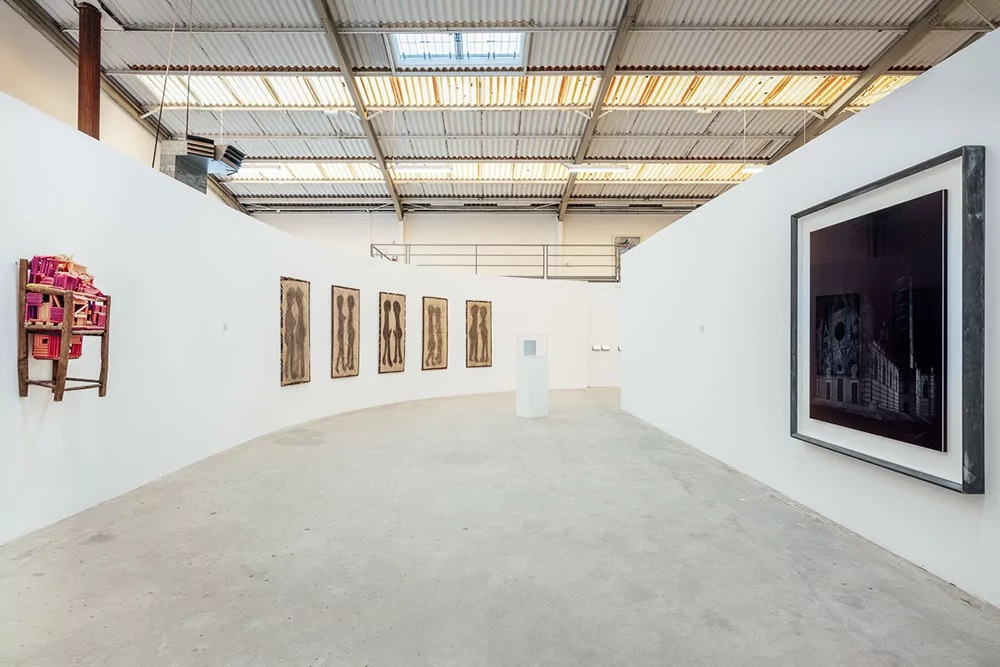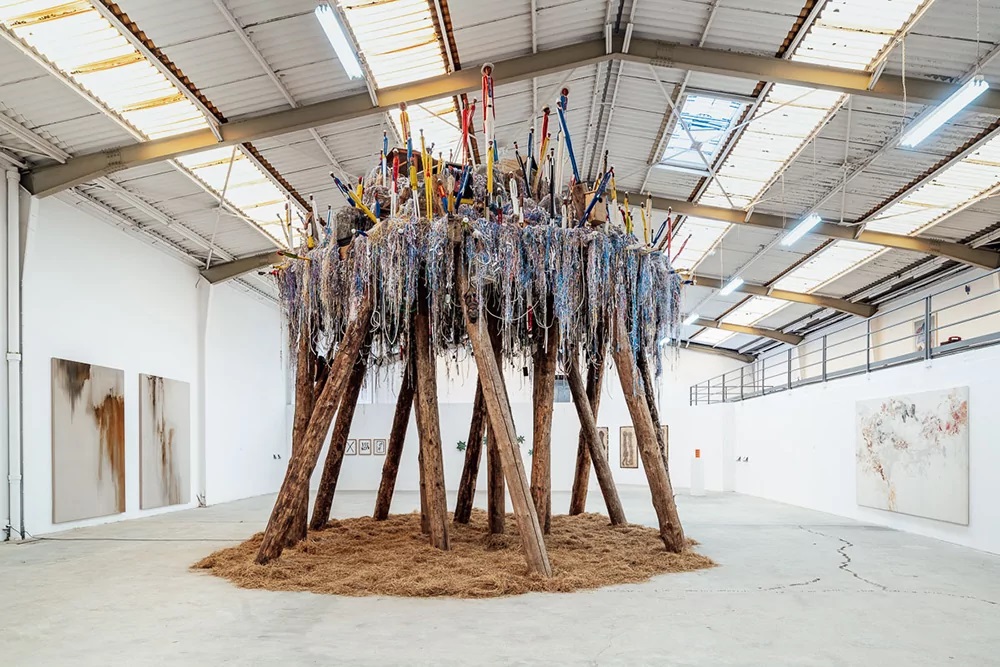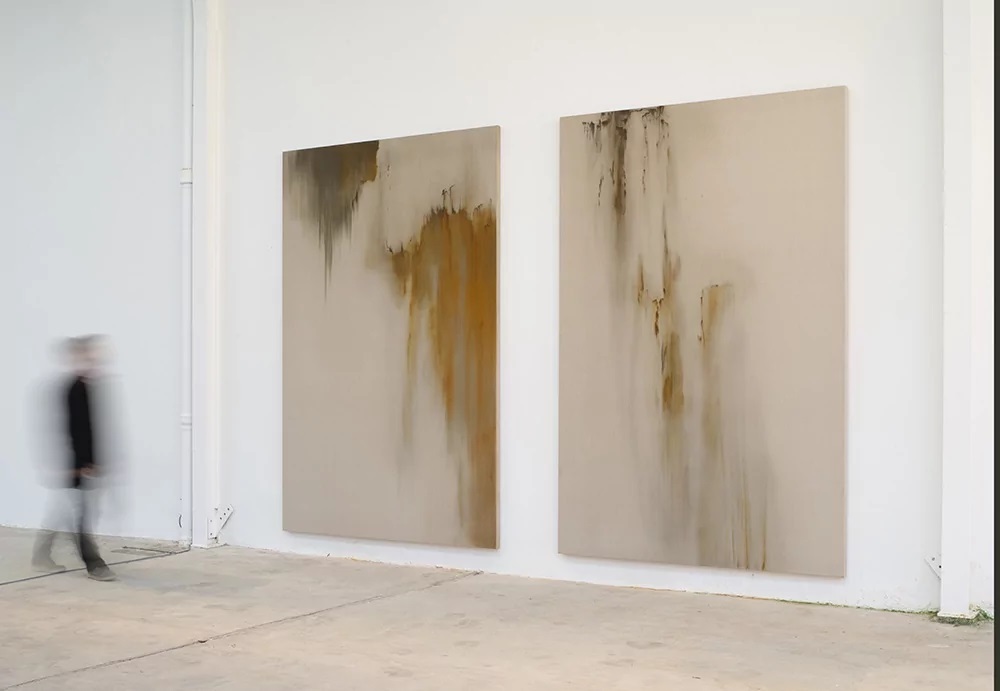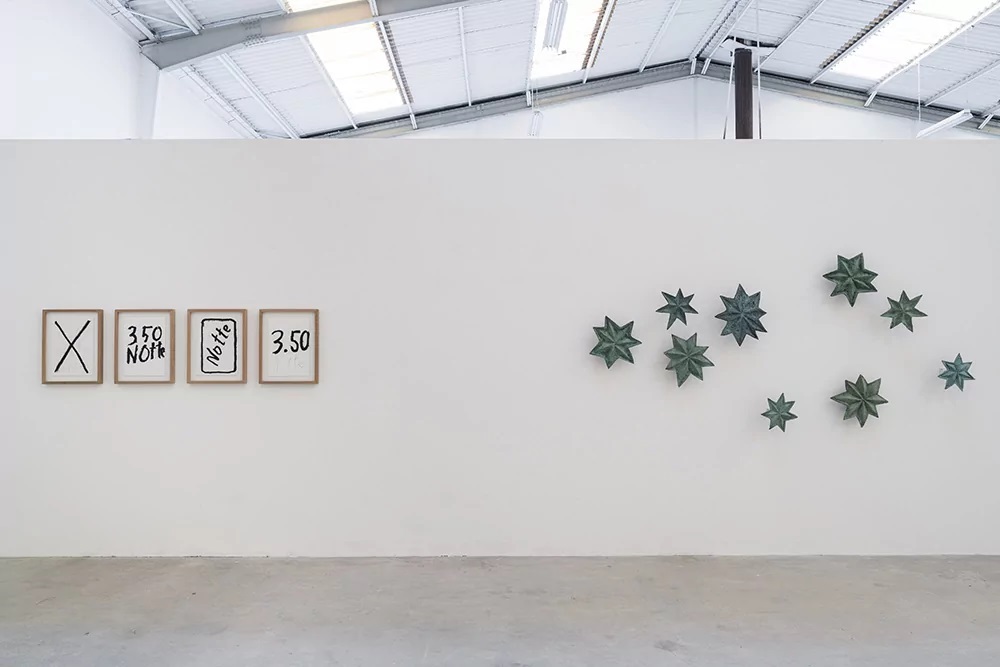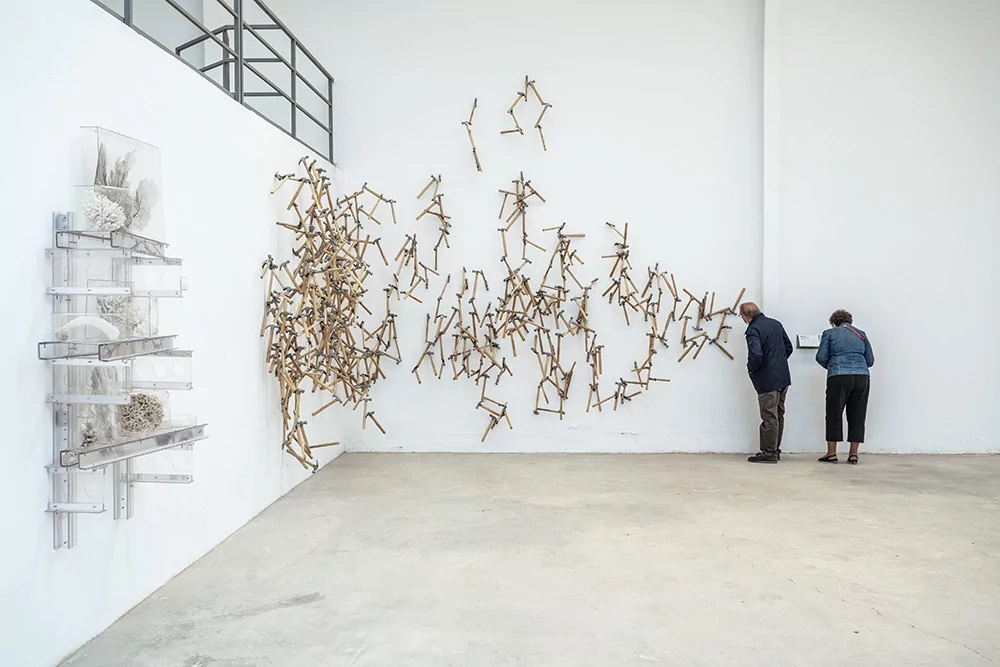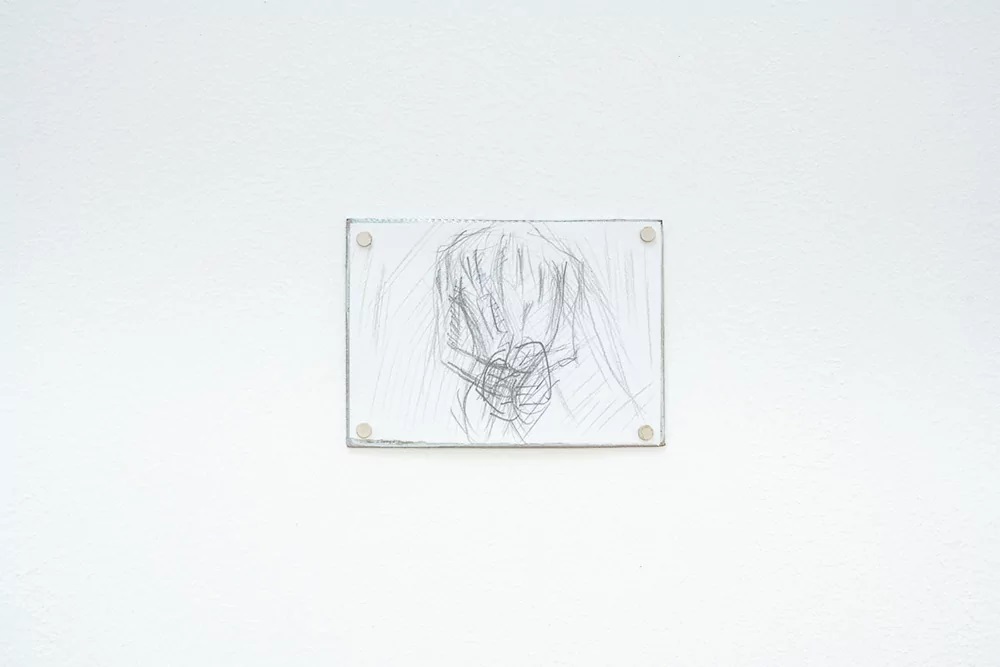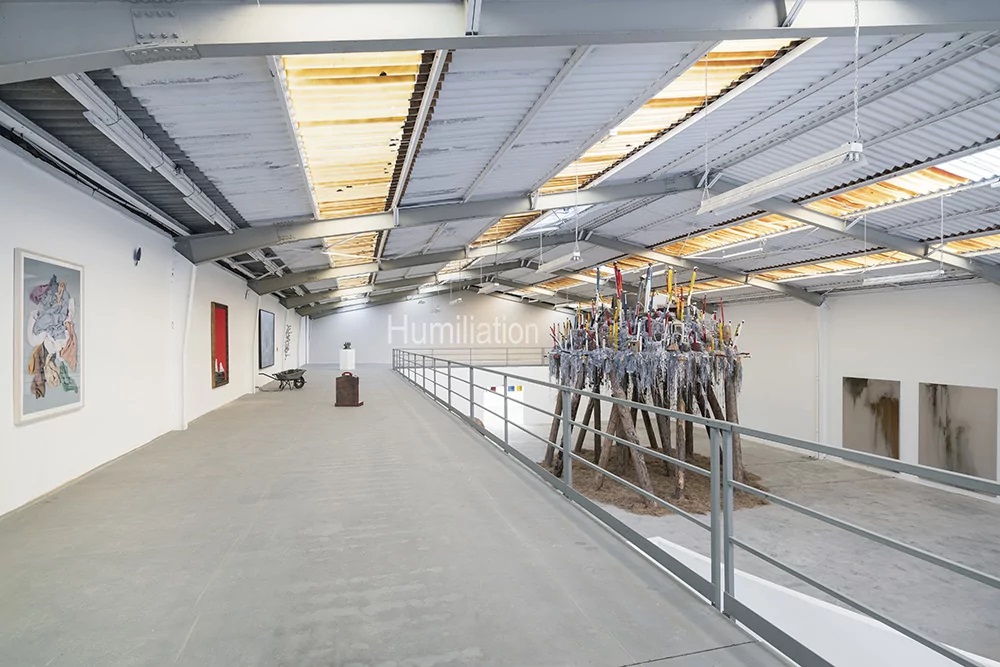PRESENTATION: Intersections by Susana Pilar
 With the exhibition ‘Intersections”, inaugurated in October 2020, Galleria Continua already wanted to question this period marked by a radical change in our personal relationships. In the second chapter “Intersections Libres” the visitor was invited to wander through the physical spaces created by the works, but also through the mental connections that could be created.
With the exhibition ‘Intersections”, inaugurated in October 2020, Galleria Continua already wanted to question this period marked by a radical change in our personal relationships. In the second chapter “Intersections Libres” the visitor was invited to wander through the physical spaces created by the works, but also through the mental connections that could be created.
By Efi Michalarou
Photo: Galleria Continua Archive
In the exhibition “Intersections by Susana Pilar” the artist creates three moments of new narration, which interrogate encounter and relationships from different perspectives. Every day the gallery receives a letter from the artist, which will be delivered into the hands of the first visitor, an unknown communication between strangers will accompany the entire duration of the exhibition. The exhibition opened with a conversation between the artist and her sister in different languages, imposed languages, other than their usual Spanish. The language transformed by the life paths of the two sisters, who had to integrate into different countries, ceases to be a simple vehicle for immediate communication. As the journey continues, language is punctuated by drawings the size of the artist’s passport. “Apuntes para una Historia“ is made up of drawings that arise from the intersection between Susana Pilar’s desire to integrate physicality into the exhibition and a drawing by Serse, which tells the story of the sea. The sea, a great communication vector, served as physical support on which she could draw her drawings. This process is recounted in the video work “Apuntes para una Historia”, where the artist is seen drawing on Serse’s work. Paced by the drawings, some pairs of works by different artists meet for the first time in the gallery space. No love at first sight, but rather a slow familiarization. In “Traditional Repair, Immaterial Injury “by Kader Attia, a deep scar carved into the ground is covered with staples, which try to repair it both successfully and unsuccessfully. In nonWestern societies, repair is not synonymous with perfection; she carries her interest on repair and its consequence: the scar. They are thus revealed, brought to the light of day, as a trace, an integral part of each individual’s history. This trace is also present in the two works “Testimonio de la Brisa” by Elizabet Cervino, a young Cuban artist who manipulates an iron-rich painting on linen canvases, managing to recreate rust and capture the passage of time. This reddening that has the illusion of imposing rocky cliffs, are not only the trace of a chemical reaction between iron and air but refers us to the very island of Cuba, this island eroded by the sea that surrounds it. At the centre of these duets, the largest and the smallest work of Intersections are placed on a two-headed throne. The first is “Home Sweet Home” by Pascale Marthine Tayou, who erected on huge tree trunks, roughly forty bird cages, approximately one hundred column statuettes, cables, and microphones, creating a cacophony of materials presented with the soft songs of birds. This whimsical and fantastic house questions us on the very notion of home. The second, “Brick”, by Zhanna Kadyrova, is a work that seems to sum up perfectly all the artist’s favourite themes. On the one hand, the use of everyday materials, very frequently used in all countries of the former Soviet Union, such as cement and ceramic tiles. On the other hand, its brick shape of standard dimensions takes us back directly to the origin of the elements that constitute it. This artistic metonymy allows the artist to voluntarily abandon clay (a material usually composing bricks) to shape it in her own way. Zhanna Kadyrova’s house is therefore reduced to its essence, the brick that composes it. Continuing the route, we come face to face with the work of Carlos Garaicoa “Deleuze & Guattari Fixing the Rhizome” born out of the artist’s obsession with accumulation. He is interested in the concept of the numerical increase in mathematics in relation to that of Rhizome in philosophy. This constantly evolving structure, deprived of hierarchy and in permanent horizontal extension, is interpreted by the artist in the form of an installation with hammers. Connected to each other, they take possession of the wall and compose a structure that knows no beginning or end, thus creating a collection of elements, which seem to multiply ad infinitum. This work is associated with “Rainbow Trusses (studio suggestions creatures III)” by artist Loris Cecchini who wields the subtle art of the intersection between science and nature. Here the structure of the piece diffracts white light to artificially create rainbows bathing the surrounding horizons with colors. Beyond this capacity, the work also represents a renewal of the cabinet of curiosities, evocating the marine world via sponges, shells and corals forming a collection with expansive potential. Each of these two works thus evokes the accumulation, whether philosophical or materialist, of the passionate collector. The improvised pairs of works continue as the visit progresses, and the dialogue also takes place outside the building that houses the main part of the exhibition. The transformation of the space by removing its roof, intervention by MBL architects on the entrance area of the Moulin de Boissy, allows for multiple viewpoints of what becomes a gathering place under the open sky, now called rightly cloister, after the classical architectural style. Previously hidden, a new view of the old Moulin is revealed. The fragmented gaze is then supported by Daniel Buren’s signature visual tool – the colored patterned windows punctuated by 8.7-centimetre white stripes. The in situ work “Sans toit, mais avec Fenetres” magnifies the old factory windows through red, green, blue and golden yellow colour films. The artistic and architectural gestures of Daniel Buren and MBL architects respectively are jointly deployed to open up to more indulgent skies. This is also the will of Pascale Marthine Tayou with the fresco “Bogolan Colors”, the name of an African textile. The exterior facade of the cloister is adorned with lively colors reflecting the artist’s imagined world.
Works by: Kader Attia, Loris Cecchini, Elizabet Cerviño, Chen Zhen, Carlos Garaicoa, Osvaldo Gonzáles, Zhanna Kadyrova, Jannis Kounellis, Jorge Macchi, Ahmed Mater, José Manuel Mesías, Ornaghi & Prestinari, Susana Pilar, Michelangelo Pistoletto, Serse, Kiki Smith, Marta Spagnoli, Hiroshi Sugimoto, Pascale Marthine Tayou, Sislej Xhafa, José Yaque
Photo: Intersections by Susana Pilar, exhibition view at Galleria Continua-Les Moulins, 2021, Photo: Oak Taylor-Smith, Courtesy Galleria Continua
Info: Galleria Continua, 46 rue de la Ferte Gaucher, Boissy-le-Chatel, France, Duration: 17/10-26/12/2021, Days & Hours: Fri-Sun 12:00-18:00, www.galleriacontinua.com
